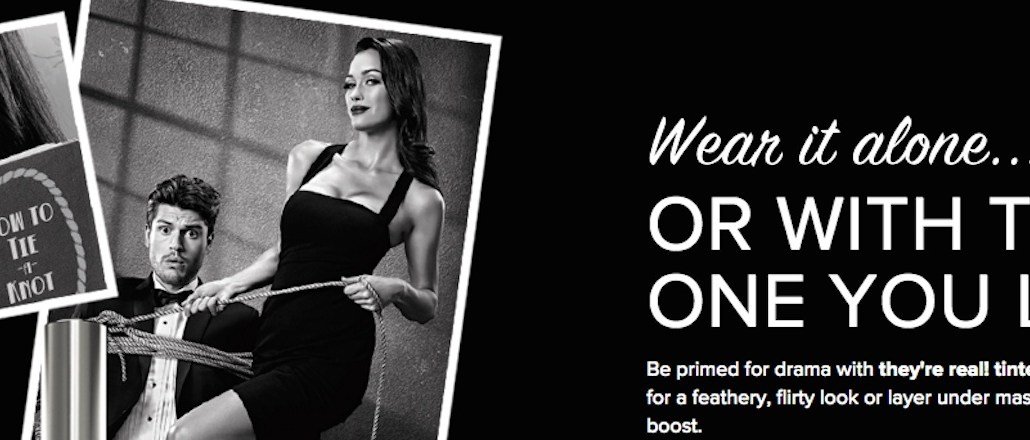Benefit’s cheeky new digital redesign targets millennials on the move

Benefit Cosmetics’ quirky, feel-good tone has won it plenty of fans across social media. And now with a brand new responsive site redesign, its bevy of “benebabes” can expect the same youthful irreverence across its digital properties.
The LVMH-owned beauty brand this week unveiled new websites in the U.S., U.K., France and Germany, revamping its existing e-commerce offering. The brand hired Huge to help it boost sales on digital channels, and cater to its young, international, mobile-savvy audience.
“Benefit has always been a really strong brand, but that cheeky persona got lost on their old website,” said Jessica L’Esperance, Huge’s vp of user experience, who worked on the redesign. “We needed to make it more visual, less verbose and a more fun and seamless digital environment to shop in.”
With 45 percent of the brand’s website traffic coming from mobile, the first critical step was to make Benefit’s websites responsive on mobile devices. Each of the websites have also been tailored to the country’s local language and currency, enabling customers to engage with products and the brand in their own native language. The brand plans to roll out sites in 42 more countries over the next three years.
Content plays a key role in elevating Benefit’s online experience beyond just a catalog of products. Its new product pages are a mix of images, videos and user-generated content.


It has introduced a new “Beauty Banter” section, which provides Q&As with local experts, influencer tutorials and spotlights on local fans or “benebabes.”
Another new addition is a standalone section devoted to eyebrows on its masthead, to amplify and help customers easily navigate towards what Benefit has been known for since 1976. It has also introduced a “Complete Your Look” section on its product pages, which suggests additional products or services that complement the product a customer may be looking at.

Benefit has also retooled a bunch of features from its old site. Its “Custom Makeup Kit,” for instance — which lets customers choose products matching the right shades and colors — is now more mobile friendly.
“It’s a big challenge to try to balance e-commerce needs with content, as well as tell a strong product story,” Benefit’s digital senior vice president, Valerie Hoecke, said. “Our objective was to have the strongest product page in the beauty industry, because if your website is winning on product pages, you’re winning overall.”
The brand is also taking a page from the playbook of skincare brands like Estée Lauder and Clinique, curating content around its customers’ dilemmas. Through a feature called the”Beauty Dilemma Solver,” Benefit highlights beauty problems like “Up-All-Night-Eyes” and “Mission Mattify” in its characteristic cheeky tone, taking customers through easy steps to then solve the problem. This includes not only product and service recommendations and tips on how to apply them, but also non-branded content such as posts like “Get Your Beauty Sleep.”
Indeed, according to L2’s Digital IQ Index from December 2015, compelling content is an important differentiator in the online retail environment among beauty brands. Videos, how-to content content and UGC not only extend the reach of a brand’s products but also help drive sales. And the Beauty Dilemma tool is a testament to that: According to Benefit, it was tested on the old site for six weeks and drove time spent on the site up by 300 percent — from four to 12 minutes. The tool also drove sales conversions up by 2.3 times.
“I think it’s exceptional — the brand personality shines through the site, making it very compelling to their core consumer,” said Geoff Cook, founding partner at Base New York. “They have the balance between pure commerce and editorial content, which is a very delicate balance to achieve.”
Benefit, however, realizes that often brand sites may just be a point on the customer’s journey to purchase, and not necessarily the destination. So while the hope is eventually to leverage its digital channels for sales, it’s not the only goal.
“We understand that the way consumers shop has really changed,” said Hoecke. “We want to make sure that we’re providing an entertaining and educational web experience somewhere along the way — if she converts, great, but even if she doesn’t we know we’re bringing her one step closer.”
More in Marketing

The Disney-OpenAI deal and generative AI copyright concerns
This week’s Digiday Podcast delves into the copyright concerns and potential trademark issues surrounding brands’ use of generative AI tools, with Davis Wright Tremaine partner Rob Driscoll.

‘There’s tremendous opportunity’: NBA sponsorships lead on European expansion
David Brody, vp, global partner management group lead at the NBA, explains its pitch to sponsor brands and how expansion isn’t far off.

New partnerships, marketing fuel BNPL’s holiday surge
This holiday season, more brands deployed BNPL services with different payment options beyond the more familiar “pay-in-four” structure.





